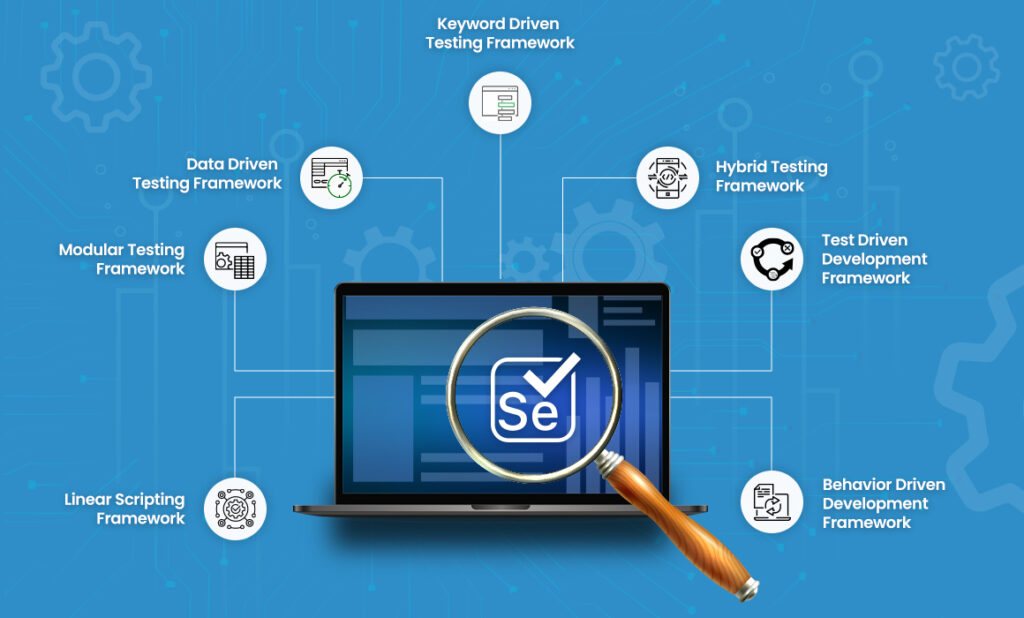These days, the importance of a business analyst’s role is growing. These days, they are among the most paid professionals. Nonetheless, there are a few skills you would need in order to work as a business analyst. We will walk you through the job of a business analyst and how to become a business analyst one in this article. Check out the Online Certification Business Analyst to learn more
Becoming a business analyst (BA) in 2025 involves a strategic combination of education, skill development, and practical experience. This guide outlines the essential steps to start and advance a career as a business analyst, incorporating insights from Brain Station H2K Infosys
Understanding the Role
A business analyst serves as the crucial link between IT and business operations, leveraging data analytics to evaluate processes, define requirements, and provide data-driven recommendations. This role effectively bridges the technological and operational aspects of an organization, ensuring that data insights translate into actionable business improvements.
- Requirement Gathering: Collecting and documenting business needs from stakeholders.
- Data Analysis: Interpreting data to guide business decisions.
- Solution Evaluation: Assessing and recommending solutions.
- Documentation: Creating detailed business process documents.
- Communication: Facilitating communication between stakeholders and technical teams.
Learn Business Analysis Fundamentals
Business analysis is a critical function within organizations that aims to identify business needs and determine solutions to business problems. Learning the fundamentals of business analysis provides a foundation for understanding how businesses operate and how to improve their processes and systems. Here’s a guide to understanding the basics of business analysis.
What is Business Analysis?
Business analysis involves understanding business needs, assessing the impact of changes, capturing, analyzing, and documenting requirements, and supporting the communication and delivery of requirements with relevant stakeholders. It acts as a bridge between business problems and technology solutions, ensuring that business needs are effectively translated into practical and beneficial outcomes.

Core Concepts of Business Analysis
1. Understanding Stakeholder Requirements
A fundamental part of business analysis is gathering and understanding the needs and requirements of stakeholders. This involves:
- Identifying Stakeholders: Recognizing all individuals or groups affected by the project.
- Eliciting Requirements: Using techniques such as interviews, surveys, workshops, and observation to gather information.
- Documenting Requirements: Clearly and concisely documenting the requirements to ensure they are understood by all stakeholders.
2. Requirement Analysis
Once requirements are gathered, the next step is to analyze them to ensure they are complete, clear, and feasible. This involves:
- Prioritizing Requirements: Determining which requirements are most critical to the project’s success.
- Validating Requirements: Ensuring the requirements align with business goals and objectives.
- Documenting Detailed Requirements: Creating detailed specifications that can be used to guide the development process.
3. Process Improvement
Business analysts play a vital role in process improvement by identifying inefficiencies and recommending improvements. This includes:
- Process Mapping: Creating visual representations of current processes to identify areas for improvement.
- Gap Analysis: Comparing current processes with desired outcomes to identify gaps and opportunities.
- Recommending Solutions: Proposing changes to processes, systems, or structures to improve efficiency and effectiveness.
4. Solution Evaluation
After implementing solutions, business analysts evaluate their effectiveness by:
- Assessing Performance: Measuring the performance of the new solution against defined metrics and objectives.
- Gathering Feedback: Collecting feedback from stakeholders to understand the solution’s impact and areas for further improvement.
- Making Adjustments: Recommending adjustments to enhance the solution’s effectiveness based on performance data and feedback.
Key Skills for Business Analysts
1. Analytical Skills
Analytical skills are essential for interpreting data, identifying trends, and making data-driven decisions. This includes proficiency in tools like Excel, SQL, and business intelligence software.
2. Communication Skills
Effective communication is crucial for business analysts to convey complex information clearly to various stakeholders. This involves both written and verbal communication skills.
3. Problem-Solving Skills
Business analysts must be adept at solving complex problems by developing innovative solutions. This involves critical thinking and the ability to approach problems methodically.
4. Technical Skills
Understanding and using technical tools and software is vital. This includes familiarity with data analysis tools, project management software, and other relevant technologies.
Educational Background and Qualification For Business Analyst
The role of a business analyst (BA) is crucial across various sectors as they help bridge the gap between IT and the strategic functions of an organization. BAs analyze business needs, assess business models, and integrate those with technology to drive efficiency and productivity. Given the breadth and depth of this role, the educational background and qualifications necessary for a business analyst are diverse and multifaceted.
Educational Background
Typically, business analysts come from a variety of educational backgrounds. The most common degrees include:
- Business Administration: A degree in business administration provides a solid foundation in business principles and practices, which is crucial for understanding organizational dynamics and managing projects.
- Information Systems: This degree focuses on the relationship between technology and business operations, preparing analysts to understand and implement IT solutions that align with business objectives.
- Finance or Economics: A background in finance or economics is advantageous for roles that require heavy quantitative analysis, such as in investments, banking, or corporate finance sectors.
- Computer Science: Although less common, a degree in computer science can be beneficial for business analysts working closely with IT departments on system implementations and optimizations.
- Engineering: Degrees in various engineering disciplines can be relevant, especially when the BA is working in a technical industry or in process optimization roles.
While a bachelor’s degree is typically sufficient to enter the field, a master’s degree such as an MBA (Master of Business Administration) or a master’s in information systems can be particularly valuable. These advanced degrees often provide a competitive edge in the job market and can lead to senior-level positions.

Business Analyst Certification Requirements
In addition to formal education, professional business analyst certification can significantly enhance a BA’s qualifications:
- Certified Business Analysis Professional (CBAP): Offered by the International Institute of Business Analysis (IIBA), the CBAP certification requires a minimum of 7,500 hours of BA work experience. It is recognized globally and indicates a high level of competence in the principles and practices of business analysis.
- Certification of Capability in Business Analysis (CCBA): Also offered by IIBA, this certification is a step below CBAP and requires at least 3,750 hours of business analysis experience. It is suitable for individuals who have some BA experience and wish to advance further.
- Project Management Professional (PMP): Provided by the Project Management Institute (PMI), this certification is valuable for business analysts who often take on project management roles. It demonstrates the ability to manage and lead projects efficiently.
- Agile Certifications: Certifications such as Certified Scrum Master (CSM) or PMI-Agile Certified Practitioner (PMI-ACP) are beneficial for BAs working in agile development environments. These certifications help BAs understand agile methodologies and practices.
Skills Development
Beyond academic degrees and certifications, successful business analysts often possess a mix of technical and soft skills. These include analytical thinking, problem-solving, effective communication, and stakeholder management. Proficiency in specific BA tools, like Microsoft Visio for process mapping or SQL for database management, is also highly beneficial.
How to Become a Business Analyst: A Roadmap
Becoming a business analyst (BA) involves a combination of education, skills development, and practical experience. Here’s a roadmap to guide you through the process:
1. Educational Foundation
Start with a strong educational background. Most business analysts hold at least a bachelor’s degree. Relevant fields of study include business administration, information systems, finance, or economics. These courses provide a solid foundation in business processes, financial management, and systemic thinking.
2. Develop Key Skills
A successful business analyst must possess a mix of technical and interpersonal skills. Key technical skills include data analysis, proficiency in Microsoft Office (especially Excel), and an understanding of SQL databases and business intelligence tools like Tableau or Power BI. Equally important are soft skills such as critical thinking, effective communication, problem-solving, and the ability to negotiate and persuade stakeholders.
3. Gain Practical Experience
Hands-on experience is crucial. Start in a related role, such as in customer service, finance, or IT support, where you can learn business processes and how organizations operate. Volunteering for project teams or tasks that require data analysis or process improvement can also provide valuable experience.
4. Achieve Certifications
Certifications can enhance your resume and validate your skills. Consider certifications such as the Certified Business Analysis Professional (CBAP), Certification of Capability in Business Analysis (CCBA), or Agile certifications. These demonstrate a professional level of knowledge and commitment to the field.
5. Build a Portfolio
As you gain experience, compile your work into a portfolio. Include successful projects, analyses, and recommendations that have led to positive outcomes. A robust portfolio will be a key asset in job interviews.
6. Network and Continue Learning
Networking with other professionals can provide insights into new opportunities and trends in the field. Joining industry groups like the International Institute of Business Analysis (IIBA) can expand your professional network. Continuously updating your skills as technologies and methodologies evolve is also crucial.
By following this roadmap, you can build a entry level business analyst careers , equipped to use analytical tools and insights to influence decision-making and improve business processes effectively.

2. Take a Data Analytics Course
Business administration evolves into business analysis when hard data comes into play. This data serves as the foundation for the insights business analysts use to define, study, and solve problems within a business context. Essentially, business analysts are specialized data analysts who focus their skills on enhancing a company’s operations and achieving its goals. The main difference between business analysts and data analysts is that while data analysts look for significant patterns within data, business analysts concentrate on how these patterns can be leveraged to further a business’s objectives. Therefore, taking a data analytics course is a vital step toward becoming a proficient business analyst.
As businesses increasingly conduct operations online, the volume of available data has grown exponentially. This data encompasses various metrics, such as operating costs, performance indicators, web traffic, sales figures, and overall efficiency. However, this data does not translate into actionable recommendations on its own. Business analysts must have a solid understanding of data analytics techniques to extract meaningful insights from this data. They often collaborate closely with data analysts or undertake the data analysis themselves to turn raw data into strategic business recommendations.
A coding bootcamp focused on data analytics or a similar course of study provides a comprehensive overview of the entire data analytics field. In such courses, you gain hands-on experience by working on projects that apply data analysis skills to real business case studies. Here’s a closer look at why a data analytics course is crucial for aspiring business analysts:
Developing Core Analytical Skills
Data analytics courses teach you how to collect, clean, and analyze large datasets. These skills are fundamental for business analysts, as they enable you to derive insights that can drive business decisions. You’ll learn to:
- Collect Data: Gather data from various sources, including databases, spreadsheets, and APIs.
- Clean Data: Ensure data accuracy by removing inconsistencies and errors.
- Analyze Data: Use statistical methods to interpret data and identify trends.
Understanding Statistical Techniques
A solid grasp of statistics is essential for data analysis. In a data analytics course, you will learn about:
- Descriptive Statistics: Summarize and describe the main features of a dataset.
- Inferential Statistics: Make predictions or inferences about a population based on a sample of data.
- Regression Analysis: Understand relationships between variables to predict outcomes.
Mastering Data Visualization
Presenting data in a clear and compelling way is a key skill for business analysts. Data visualization tools like Tableau, Power BI, and Excel help you create visual representations of data, making it easier to communicate insights to stakeholders. In a data analytics course, you will learn to:
- Create Charts and Graphs: Visualize data through bar charts, line graphs, pie charts, and more.
- Build Dashboards: Develop interactive dashboards that provide real-time insights.
- Generate Reports: Produce comprehensive reports that summarize your findings and recommendations.
Gaining Hands-On Experience
One of the most valuable aspects of a data analytics course is the practical experience you gain. Through hands-on projects, you apply the theoretical knowledge you’ve acquired to real-world business scenarios. This experience is invaluable as it:
- Enhances Problem-Solving Skills: Allows you to tackle real business problems and devise data-driven solutions.
- Builds Your Portfolio: Provides tangible examples of your work that you can showcase to potential employers.
- Prepares You for the Workplace: Gives you a taste of what it’s like to work on data analytics projects in a business setting.
Certification and Credibility
Completing a data analytics course often comes with a certification that validates your skills and knowledge. This certification can enhance your resume, making you a more attractive candidate to employers. It demonstrates your commitment to continuous learning and your ability to apply data analytics in a business context.
Taking a data analytics course is an essential step for anyone aspiring to become a business analyst. It equips you with the analytical, statistical, and visualization skills needed to interpret data and make data-driven business decisions. Moreover, the hands-on experience and certification you gain from such a course can significantly boost your career prospects. By investing in a quality data analytics course, you position yourself as a valuable asset capable of driving business success through informed analysis and strategic insights.

3. Work on Projects to Develop Your Practical Data Analytics Skills
In the rapidly evolving field of data analytics, the theoretical knowledge gained from textbooks and courses must be complemented with practical experience to truly master the discipline. One of the most effective ways to develop these practical skills is by working on real-world projects. These projects not only enhance your understanding but also prepare you for the challenges and demands of a career in data analytics. This article delves into the significance of project work in data analytics and outlines the key objective of data analysis.
The Importance of Project Work in Data Analytics
Project work offers a hands-on approach to learning that is crucial for developing a deep understanding of data analytics techniques. When you engage in projects, you are faced with actual data issues, from cleaning and processing large datasets to interpreting complex results. Each step in a project helps you to apply theoretical concepts in practical scenarios, thereby solidifying your knowledge and boosting your problem-solving skills.
Moreover, projects can vary greatly in scope and focus, ranging from small-scale analyses using datasets from Kaggle to larger, collaborative projects that may involve real-time data streams from business operations. This variety not only keeps the learning process interesting but also broadens your exposure to different kinds of data sets, analytical tools, and industry-specific challenges.
The Key Objective of Data Analysis
At its core, the key objective of data analysis is to extract actionable insights from data, which can be used to make informed decisions and solve real-world problems. Whether in business, healthcare, finance, or any other sector, data analysis aims to identify patterns, test hypotheses, and predict future trends based on historical data. The insights gained from these analyses are then translated into strategic actions that can enhance operational efficiency, increase profitability, improve customer satisfaction, or address any specific goals of the organization.
For instance, in a retail business, data analysis can help identify the most popular products, predict seasonal fluctuations in sales, and optimize inventory levels accordingly. In healthcare, data analysis is used to improve patient outcomes by predicting which treatments are most effective for specific conditions based on patient data.
Developing Practical Data Analytics Skills through Projects
Working on projects allows you to develop a variety of skills that are essential for a successful career in data analytics:
- Technical Skills: You’ll gain proficiency in using data analytics tools and technologies such as SQL for database management, Python or R for data manipulation and analysis, and data visualization tools like Tableau or PowerBI. Each project will help you to learn how to apply these tools in different contexts and with different types of data.
- Analytical Thinking: Projects require you to think critically about the data. You must determine what data is relevant, how it should be processed, and what analytical methods are most appropriate to address the problem at hand. This kind of problem-solving skill is crucial in data analytics.
- Communication Skills: After analyzing data, the next step is often to present your findings to stakeholders. Projects help you to develop the ability to present complex information clearly and persuasively, whether in written reports or presentations. These communication skills are critical, as they enable you to bridge the gap between data insights and business strategy.
- Project Management: You will learn how to manage a project from start to finish, setting timelines, defining deliverables, and managing resources. This helps you to work efficiently and effectively, ensuring that projects are completed on time and meet the required objectives.

4.Develop Visualizations and Practice Presenting Them
In the world of data analytics, the ability to develop effective visualizations and present them clearly is indispensable. Visualizations transform complex data sets into accessible and understandable graphics, helping stakeholders make informed decisions. This skill set not only requires proficiency in various visualization tools but also an understanding of the types of data visualizations that best convey the message intended. Here, we explore the different types of data visualizations, delve into some popular visualization tools, and discuss the importance of practicing presentation skills.
Types of Data Visualization
Data visualization comes in many forms, each suited to different kinds of data and analysis objectives. Here are some common types:
- Bar Charts: Useful for comparing quantities across different categories. Horizontal bar charts are especially effective for displaying long category names or numerous categories.
- Line Graphs: Ideal for showing trends over time (time series), allowing viewers to discern patterns or changes across a continuous data set.
- Pie Charts: Best used for showing proportions within a whole, where the total of all segments equals 100%.
- Scatter Plots: Great for identifying relationships or correlations between two variables. Each point on the scatter plot represents a value pair from the data set.
- Heat Maps: Useful for representing the magnitude of a phenomenon as color in two dimensions, which can help to spot trends, variances, and patterns in data.
- Histograms: A type of bar chart that represents the distribution of numerical data by showing the frequency of data points within certain ranges (bins).
- Box Plots: Provide a good visual summary of one or more sets of data, highlighting the median, quartiles, and outliers.
Understanding when to use each type of visualization is crucial, as the wrong choice can lead to misunderstanding or misinterpretation of the data.
Visualization Tools
To create these visualizations, several tools are available, ranging from simple to advanced, that cater to different user needs. Some of the most widely used tools include:
- Microsoft Excel: Known for its accessibility and ease of use, Excel is a fundamental tool that can produce basic charts and plots.
- Tableau: A powerful tool for creating a wide range of interactive and shareable dashboards. It’s particularly valued for its user-friendly interface and the ability to handle large datasets.
- Power BI: Microsoft’s analytics service provides comprehensive modeling capabilities, real-time analytics, and excellent integration with other Microsoft products like Excel and Azure.
- R and Python: These programming languages offer extensive libraries for data manipulation and visualization (e.g., ggplot2 for R and Matplotlib, Seaborn, and Plotly for Python). They are ideal for custom visualizations and automating the creation of complex graphics.
- Google Charts: A free tool that is web-based and allows for the creation of interactive charts that can be embedded in web pages.
Each tool has its strengths and ideal use cases, and the choice of tool often depends on the specific needs of the project, the familiarity of the user, and the audience for the data visualization.
Practice Presenting Visualizations
Developing visualizations is only part of the challenge; the ability to present these visualizations effectively is equally important. Practicing how to present data visualizations involves:
- Storytelling: Crafting a narrative around the data to guide the audience through your findings and emphasize the insights.
- Clarity: Simplifying the presentation to make it as understandable as possible, avoiding overcomplication.
- Engagement: Using techniques to keep the audience engaged, such as posing questions or interactive elements.
- Feedback: Seeking feedback from peers or mentors to refine your presentation skills and visualization clarity.
Mastering the development and presentation of data visualizations is crucial for any data professional. By understanding the various types of data visualizations, utilizing the right tools to create these visualizations, and practicing how to present them effectively, you can ensure that your data-driven insights have the desired impact. Whether in academic environments, business meetings, or public forums, powerful visualizations and compelling presentations bridge the gap between complex data and strategic decision-making.

5. Develop a Business Analyst portfolio to showcase your work
In the competitive field of business analysis, having a portfolio that showcases your skills, projects, and achievements can significantly enhance your professional profile. A well-crafted portfolio not only demonstrates your expertise in analyzing business needs and determining solutions but also serves as a tangible proof of your ability to potential employers or clients. Here, we explore how to develop an effective business analyst portfolio and offer five essential tips for presenting business analysis projects within it.
Understanding the Importance of a Business Analyst Portfolio
A business analyst portfolio is a curated collection of documents, presentations, project summaries, and other artifacts that together demonstrate your professional skills, knowledge, and experience. This portfolio is crucial when you are seeking new job opportunities, bidding for freelance work, or aiming to climb the career ladder within your current organization. It provides a structured way to exhibit your problem-solving prowess, your ability to translate business requirements into actionable insights, and your proficiency with analytical tools and methodologies.
Components of a Business Analyst Portfolio
An effective portfolio should include:
- Project Summaries: Highlight key projects you’ve worked on, outlining the business problem, your approach, and the outcomes.
- Case Studies: In-depth analysis of particularly successful projects that show your methodological approach and innovative solutions.
- Visualizations and Reports: Examples of data visualizations, business reports, and dashboards you’ve created.
- Testimonials and References: Positive feedback from clients, supervisors, or colleagues that endorse your skills and achievements.
- Certifications and Qualifications: Relevant certifications such as CBAP, PMI-PBA, or Agile certifications that authenticate your technical knowledge and skills.
5 Tips for Business Analysis Projects in Your Portfolio
When selecting and presenting projects for your portfolio, consider these five tips to ensure your portfolio is as compelling as possible:
- Showcase a Variety of Projects: Include projects that demonstrate a range of skills and experiences, such as risk analysis, workflow improvements, or technology implementations. This variety will show your versatility and ability to handle different aspects of business analysis.
- Emphasize Outcomes and Impact: For each project, clearly articulate the impact of your work. Use quantitative measures where possible, such as cost savings, revenue enhancement, or improved customer satisfaction rates. This not only highlights the success of the project but also your ability to drive tangible business results.
- Detail Your Role in the Project: It’s important to clarify your specific contributions to each project. Describe the problems you solved, the analytical tools and techniques you used, and how you collaborated with others. This helps potential employers or clients understand your direct involvement and expertise.
- Incorporate Visual Elements: Use graphs, charts, and other visual tools to represent the results of your analysis or to showcase before-and-after scenarios for process improvements. Visuals can make your portfolio more engaging and easier to understand at a glance.
- Keep It Concise and Professional: While it’s important to provide enough detail to demonstrate the depth of your experience, keep your portfolio concise and focused. Each project description should be brief but informative, and the overall design of the portfolio should be professional and clean.
Developing a business analyst portfolio is an ongoing process that involves continuously updating and refining your content to best represent your professional growth and achievements. By effectively using these tips to highlight your business analysis projects, you can create a compelling portfolio that not only showcases your technical skills but also your strategic impact on business operations. This portfolio will serve as a valuable tool in your professional development, helping you stand out in a competitive market and advance your career as a business analyst.
Understanding Business Analyst Roles
Business analysts come in various forms, each with distinct focuses and responsibilities depending on the industry and the specific needs of the organization. Here’s an overview of some common business analyst roles:
- IT Business Analyst: Often involved in improving the efficiency and effectiveness of IT systems. Responsibilities include gathering requirements, specifying changes to software systems, and ensuring that IT solutions meet business needs.
- Data Business Analyst: Specializes in analyzing data that affects business operations. This role involves statistical analysis, forecasting, and the use of predictive modeling to make strategic decisions.
- Healthcare Business Analyst: Focuses on improving the efficiency of healthcare delivery. They analyze patient data and workflows to optimize the delivery of care and the administrative processes within healthcare facilities.
- Financial Business Analyst: Works primarily with financial data to help organizations improve profitability through cost analysis, budgeting, and financial forecasting.
- Marketing Business Analyst: Aims to improve marketing efforts based on detailed analysis of market data, customer behavior, and marketing strategies.
- Consultant Business Analyst: Works for a consulting firm or as an independent consultant, offering expert advice across industries on projects that require detailed analysis, often entering a project for a specific purpose and a limited time.
Understanding these roles helps tailor your job search and applications to positions that best match your skills, experience, and career aspirations.
Applying to Relevant Business Analyst Jobs
To ensure success when applying for business analyst jobs positions, consider the following strategies:
- Tailor Your Resume for Each Role: Customize your resume to highlight the experience and skills that are most relevant to the job you’re applying for. Use keywords from the job description to pass automated resume screenings and catch the eye of hiring managers.
- Highlight Relevant Skills: Emphasize both technical skills like data analysis, programming, and software knowledge, as well as soft skills such as problem-solving, communication, and stakeholder management. Each role might require a different blend of these skills.
- Showcase Quantifiable Achievements: Whenever possible, include specific, quantifiable achievements that demonstrate your impact on previous projects or roles. For example, mention any process improvements that led to cost savings or efficiency gains.
- Write a Compelling Cover Letter: Use your cover letter to tell a story that your resume can’t convey. Explain why you’re passionate about the role, how your background makes you a perfect fit, and what unique qualities you bring to the table.
- Prepare for Interviews: Research common business analyst interview questions and practice your responses. Be ready to discuss specific examples from your past work where you successfully applied your skills. Also, prepare a set of questions to ask the interviewer about the company culture, team structure, and what they expect from the candidate.
- Network: Engage with professionals in the industry through networking events, online forums, and professional groups on platforms like LinkedIn. Networking can often lead to opportunities that aren’t advertised publicly.

Business Analytics vs. Data Analytics
Business analytics and data analytics are closely related fields that often overlap, but they have distinct focuses and objectives. Understanding the differences between them is crucial for professionals looking to enter or specialize in these areas.
Business Analytics focuses primarily on using analytical models to solve business-related problems and to facilitate business decisions. The main objective of business analytics is to analyze various business processes and data to provide actionable insights that can lead to improved performance and competitive advantage. It involves examining historical data to gain new insights and improve strategic decision-making. Techniques used in business analytics include statistical analysis, data mining, predictive analytics, and prescriptive analytics, all tailored towards understanding the dynamics of the business and influencing business strategies. This field is particularly concerned with metrics that affect business efficiency, profitability, and productivity.
Data Analytics, on the other hand, is a broader field that encompasses the processes and techniques associated with analyzing large sets of data or big data. This field aims to extract patterns, correlations, and insights from both structured and unstructured data, using various tools and methodologies across different domains. Data analytics can be applied to virtually any form of data to uncover hidden patterns, correlations, and other insights, making it less business-specific than business analytics. It includes branches like descriptive analytics, which interprets historical data to understand changes over time; predictive analytics, which uses statistics to forecast future outcomes; and machine learning that employs algorithms to analyze trends.
While both fields overlap significantly—both require strong data handling and analytical skills—the key difference lies in their end goals. Business analytics is specifically about driving better business decisions and strategies, whereas data analytics has a broader scope that might include non-business applications such as science, healthcare, or public policy.
Business Analyst Salary Overview
The salary of a business analyst can vary widely depending on several factors including geographical location, industry, experience level, and educational background. As organizations increasingly rely on data-driven decision-making, the demand for skilled business analysts continues to grow, often accompanied by competitive salaries.
Geographical Variation
In the United States, the average salary for a business analyst can range from approximately $60,000 to over $100,000 per year, according to data from Glassdoor and Payscale. Factors such as the cost of living and the concentration of industries typically influence these figures. For example, business analysts in cities like San Francisco and New York often earn higher salaries due to the high cost of living and the presence of numerous tech companies and financial institutions.
Industry Impact
Salaries also vary significantly across different industries. Business analysts in IT, banking, and management consulting tend to be at the higher end of the salary spectrum, reflecting the high value placed on data analysis in these sectors. In contrast, analysts in non-profit organizations or smaller startups may earn less but gain valuable experience and potentially more diverse responsibilities.
Experience and Education
Experience is another major factor affecting salary. Entry-level business analysts might start on the lower end of the salary range but can see substantial increases as they gain experience and take on more complex projects. Mid-level analysts with several years of experience and specific industry knowledge can expect higher salaries, while senior business analysts or those with specialized skills in high-demand areas like big data or artificial intelligence can command top salaries.
Further education and certifications such as a Certified Business Analysis Professional (CBAP) or a Master’s degree in a relevant field can also boost earning potential. These qualifications demonstrate a commitment to the field and a high level of expertise, which are often rewarded with higher pay.
Overall, a career as a business analyst offers promising financial rewards along with opportunities for growth and advancement. Salaries are competitive and can increase significantly with experience, advanced education, and industry-specific skills. As businesses continue to recognize the value of strategic data analysis, the financial prospects for business analysts are likely to remain strong.
Are You Ready to Become a Business Analyst?
Now that you’ve familiarized yourself with the role of a business analyst, understood their key responsibilities, and learned about the steps to enter this dynamic field, you’re well-prepared to launch your career in business analytics. If you’re aspiring to excel as a professional business analyst, consider exploring our newly developed Business analysis Course Online. This program is designed to enhance your skills and elevate your career prospects. Enroll today and take a significant step towards scaling up your career in business analysis!





























